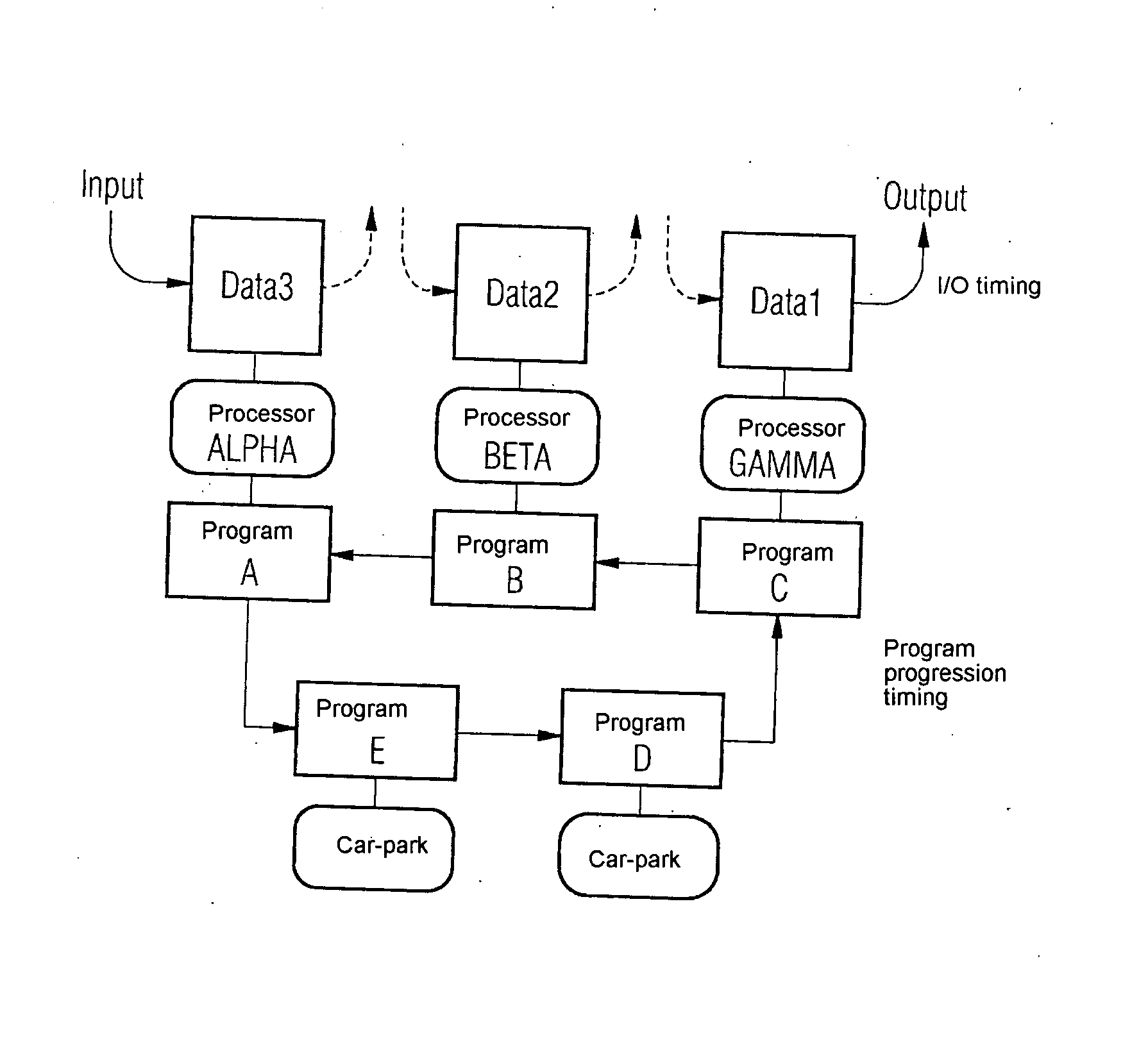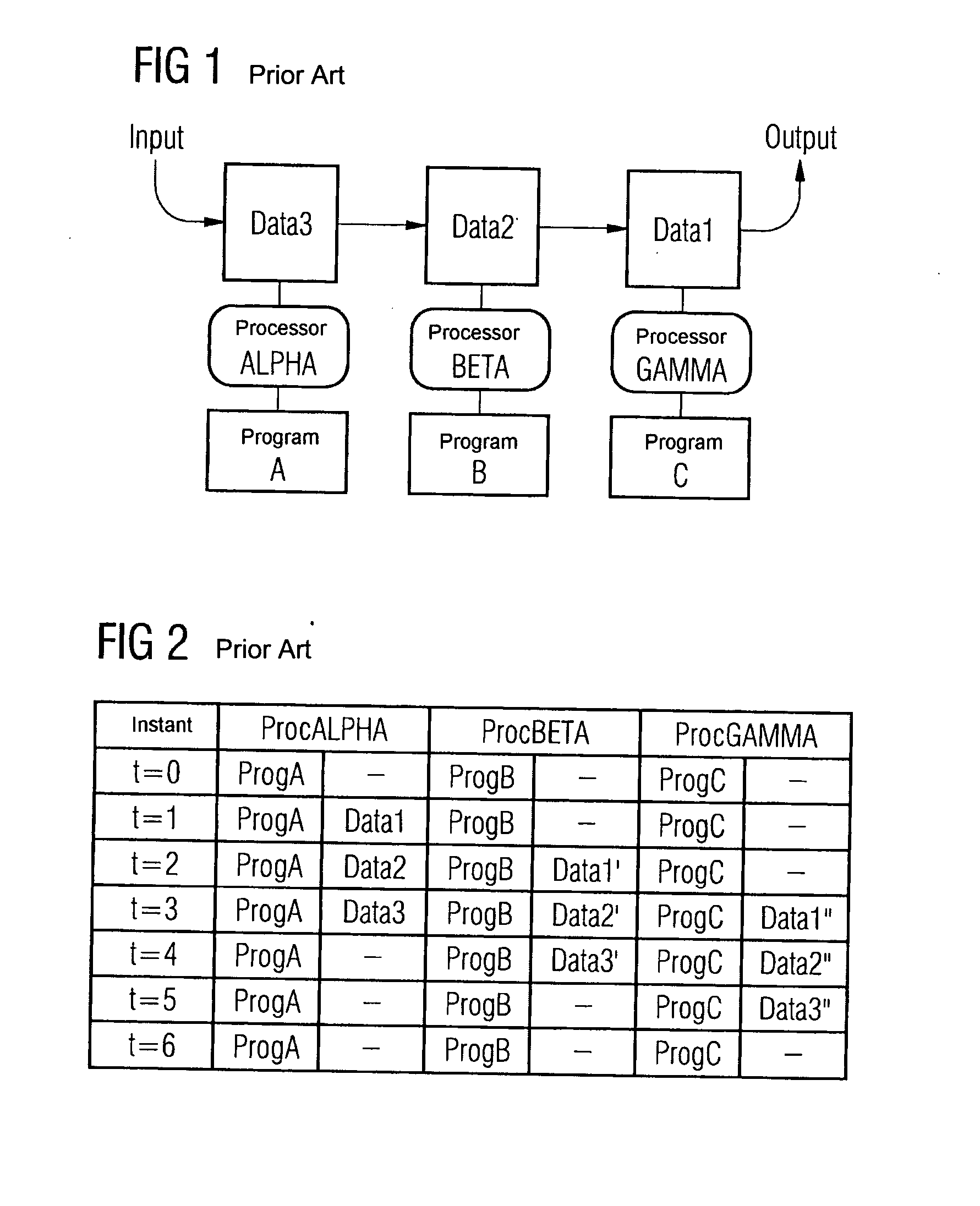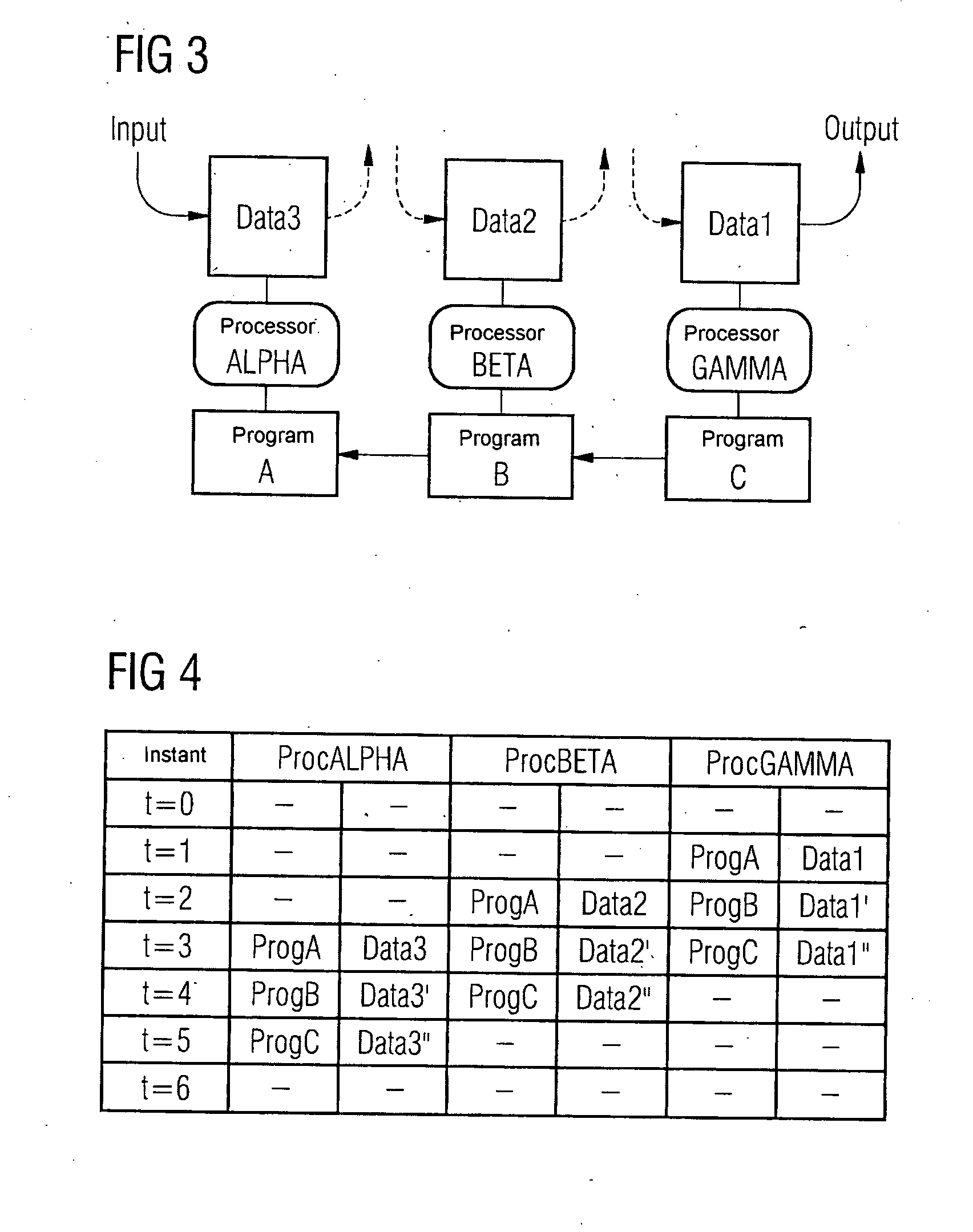Method for processing streaming data in a multiprocessor system
a multi-processor system and streaming data technology, applied in the direction of digital computers, instruments, processor architectures/configurations, etc., can solve the problems of not being made available by an individual commercially available processor, processing speed is subject to certain demands, and computing power is required very high, so as to achieve the effect of running much faster
- Summary
- Abstract
- Description
- Claims
- Application Information
AI Technical Summary
Benefits of technology
Problems solved by technology
Method used
Image
Examples
Embodiment Construction
[0029] In the following, the approach of program pipelining is described with reference to FIGS. 3 to 5 and contrasted with the data pipelining explained above with reference to FIGS. 1 and 2. Formally, one processing step is described by one tuple (program, processor, data) which defines the assignment of a sub-problem at a specific instant. In the data pipelining already described above, the processor and program form one processing stage. This stage is constructed once and is then never modified: only the data are replaced. In program pipelining on the other hand, a processor is loaded with a data set which, as shown in FIG. 3, then also remains on this processor. The individual programs are then routed to this processor in a time sequence, and the processor executes the programs on the data present (FIG. 4). The exchange of the programs in the correct sequence ultimately leads to the same calculation being carried out as in data pipelining.
[0030] Once the calculation has been c...
PUM
 Login to View More
Login to View More Abstract
Description
Claims
Application Information
 Login to View More
Login to View More - R&D
- Intellectual Property
- Life Sciences
- Materials
- Tech Scout
- Unparalleled Data Quality
- Higher Quality Content
- 60% Fewer Hallucinations
Browse by: Latest US Patents, China's latest patents, Technical Efficacy Thesaurus, Application Domain, Technology Topic, Popular Technical Reports.
© 2025 PatSnap. All rights reserved.Legal|Privacy policy|Modern Slavery Act Transparency Statement|Sitemap|About US| Contact US: help@patsnap.com



